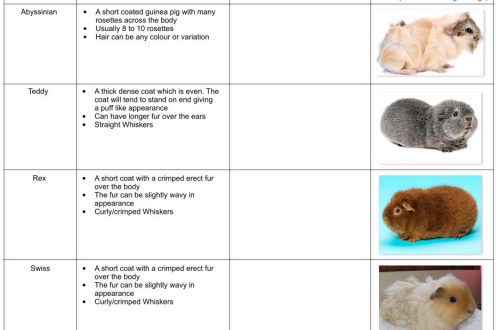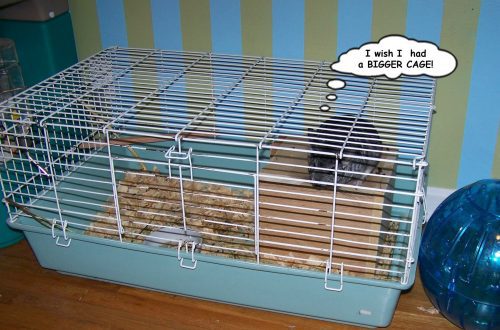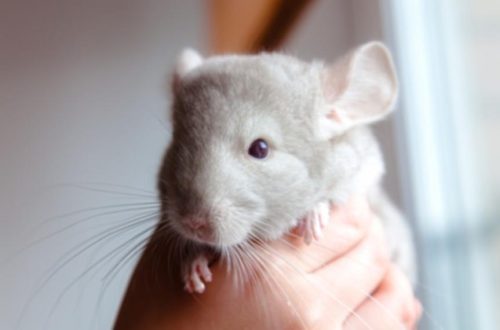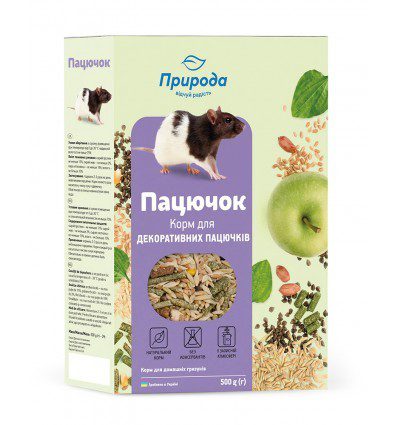
What to feed decorative rats?
What to feed decorative rats is an extremely important question. After all, the well-being of the pet, its health and even life expectancy depend on it. Therefore, it is important to know which products will benefit the decorative rat, and which can cause irreparable harm.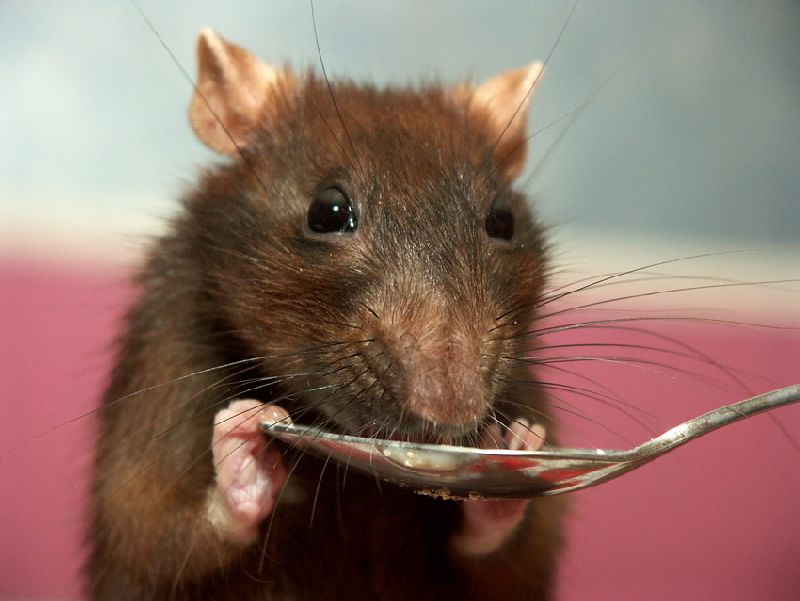 So, what can you feed decorative rats, and what foods should you refrain from?
So, what can you feed decorative rats, and what foods should you refrain from?
Contents
- What can you feed decorative rats
- What can you feed decorative rats, but with a caveat (conditionally healthy foods)
- What can you feed decorative rats, but with caution (problems are possible)
- What is undesirable to feed ornamental rats (products potentially dangerous for ornamental rats)
- What not to feed decorative rats
What can you feed decorative rats
- Buckwheat. This low-calorie product is suitable even for ornamental rats suffering from diabetes.
- Millet (millet) is an excellent component of feeding ornamental rats.
- Barley (pearl groats).
- Rye.
- Fig.
- Basil.
- Zucchini (any kind)
- Cilantro.
- Carrots (any kind) However, keep in mind that in large quantities this product can cause indigestion in a decorative rat.
- Cucumbers.
- Parsley leaves.
- Salad: field lettuce (corn), iceberg, arugula, Beijing (Chinese) cabbage, lettuce, spinach.
- Celery is also good for ornamental rats.
- Pumpkin (any kind)
- Dill is another food that can be fed to a decorative rat.
- Zucchini (any kind)
- Watermelon (however, keep in mind that early watermelon may contain nitrates). You can also feed the ornamental rat with seeds.
- Avocado.
- Apricots.
- A pineapple.
- Hawthorn (but it reduces pressure).
- Cherry.
- Grape.
- Melons (however, early melons can be “rich” in nitrates).
- Strawberry wild-strawberry.
- Cranberry.
- Mango.
- Raspberries.
- Peaches.
- Rowan (red).
- Currant.
- Persimmon (but only sweet and ripe).
- Blueberry.
- Rosehip (dried).
- Apples (including seeds).
- Varenets.
- Yogurt (preferably natural, without dyes, sugar and other additives).
- Kefir.
- Ryazhenka.
- Cottage cheese.
- Gamarus.
- Zophobas.
- Bones (boiled).
- Seafood (boiled).
- Meat, including poultry (boiled). You can’t feed a decorative rat with pork!
- Meat offal (boiled).
- Fish (boiled).
- Dry food, for dogs and cats (but only very good quality!)
- Eggs (quail or chicken, boiled). The yolk is soaked, otherwise the rat may choke.
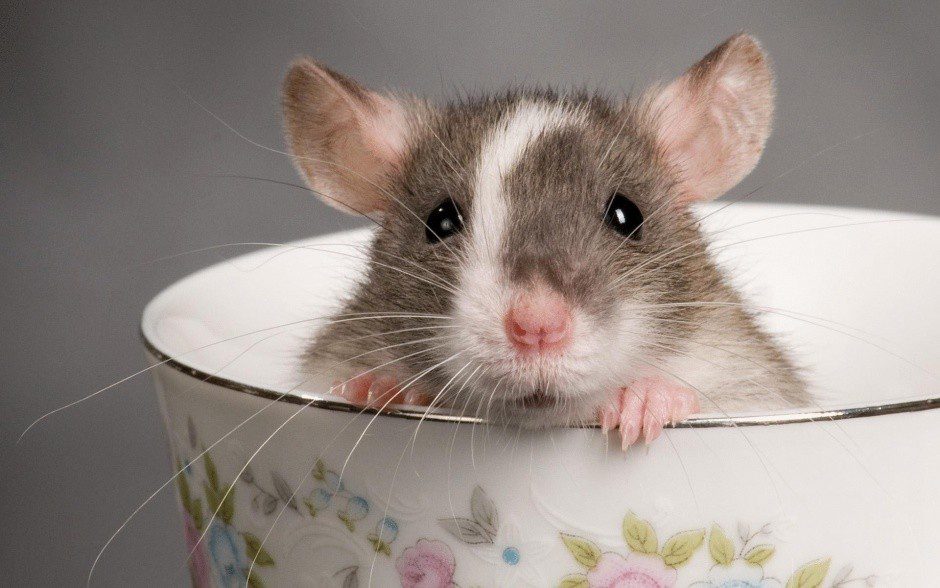
What can you feed decorative rats, but with a caveat (conditionally healthy foods)
- Corn (you can feed it to ornamental rats, but keep in mind that it has a high calorie content and a large amount of starch).
- Oats, rolled oats (may be given as a supplement to dry rat food or treats).
- Wheat (consider the high calorie content).
- Onions (green and onion) – only in very small quantities.
- Pepper (sweet) – can cause increased gas formation in animals prone to this.
- Beets – can be given in any form in small quantities, otherwise it can provoke intestinal upset.
- Tomatoes are acidic. It is undesirable to feed decorative rats with them in large quantities on an empty stomach.
- Garlic – in large quantities, decorative rats cannot be fed with it.
- Bananas (consider the high calorie content).
- Pears (may cause increased gas formation in animals prone to this).
- Pomegranates (it is undesirable to give on an empty stomach and in large quantities).
- Kiwi (contain acid, it is undesirable to give in large quantities and on an empty stomach).
- Pomelo (may cause indigestion).
- Rowan chokeberry (has a fixing property, so it can cause constipation. It also helps to lower pressure).
- Plum (may lead to indigestion).
- Dried fruits: dried apricots, apricots, prunes, raisins, apples (may increase gas formation in animals prone to this).
- Bird cherry (has fixing properties, a large amount can cause constipation).
- Peanuts (only raw, unprocessed). It is high in calories and fat.
- Acorn (dried) – when feeding ornamental rats with them, consider the high calorie content.
- Walnuts (high fat and calorie).
- Cashews (high fat and calorie).
- Sunflower seeds (high fat and calorie).
- Pumpkin seeds (high fat and calorie).
- Pine nuts (high fat and calorie).
- Coconut (high fat and calorie).
- Hazelnut (high fat and calorie content).
- Mushrooms (edible – in any form, conditionally edible – boiled).
What can you feed decorative rats, but with caution (problems are possible)
- Semolina (there is no harm, but there is no benefit either, it is better to choose another cereal).
- Artichoke (not raw).
- Eggplant (not raw, because it contains solanine).
- Broccoli (in any form, but in small quantities – can cause increased gas formation in animals prone to this).
- Potatoes (not raw, boiled – only occasionally).
- Citrus fruits (contain a large amount of acid, ripe tangerines and oranges can be given in small quantities).
- Milk (if the animal is lactose intolerant, indigestion may develop).
- Chocolate (you can just a little bitter (dark) chocolate containing more than 80% cocoa).
- Bakery products (not sweet, dried and quite a bit).
- Cookies (not sweet, in small quantities).
- Herbal tinctures (water tinctures are given for their intended purpose, alcohol tinctures are not given).
What is undesirable to feed ornamental rats (products potentially dangerous for ornamental rats)
- Peas (increases gas formation).
- Citrus pits (it is believed that they contain harmful substances).
- Honey (contains a large amount of sugar, allergic).
- Tea (any).
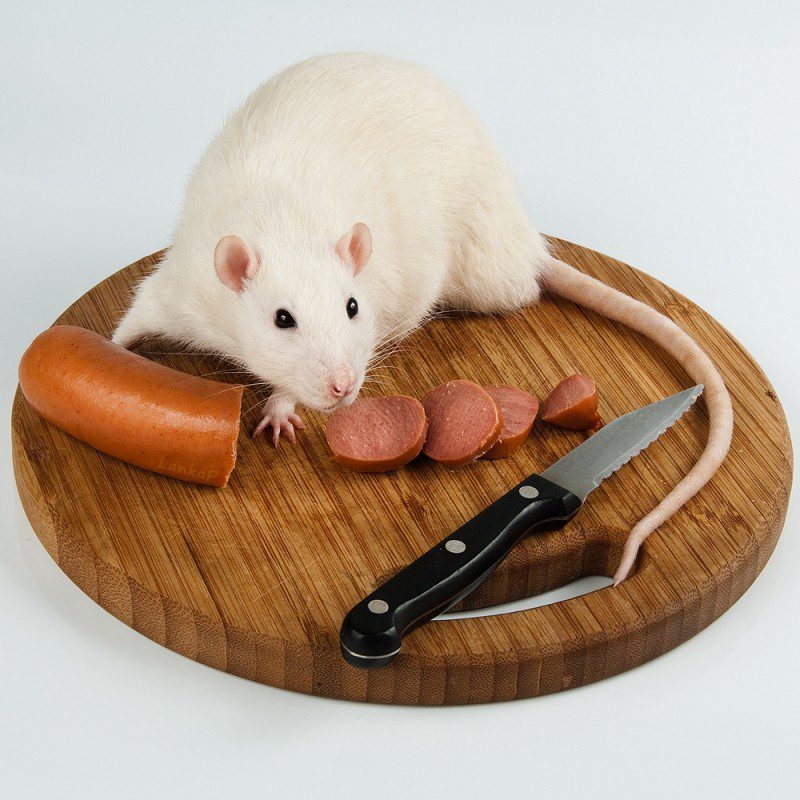 In the photo: you can not feed rats with sausages
In the photo: you can not feed rats with sausages
What not to feed decorative rats
- Beans (greatly increases gas formation if fed to ornamental rats).
- Cabbage (any) – greatly increases gas formation.
- Rhubarb – negatively affects the gastrointestinal tract of ornamental rats, because. contains a large amount of acid.
- Radishes – greatly increases gas formation.
- Turnip – greatly increases gas formation.
- Radish – greatly increases gas formation.
- Beans (raw) – greatly increases gas formation if fed to ornamental rats.
- Seeds of plums, apricots, dogwoods, peaches, cherries or sweet cherries.
- Condensed milk – too much sugar.
- Cream is very high fat.
- Sour cream is very high fat.
- Cheese is very high in fat.
- Sausage products (large amount of spices, too high fat content).
- Meat delicacies (large amount of spices).
- Salo (too high fat).
- Sweets (too much sugar).
- Chips (lots of spices).
- Jam (too much sugar).
- Alcohol.



